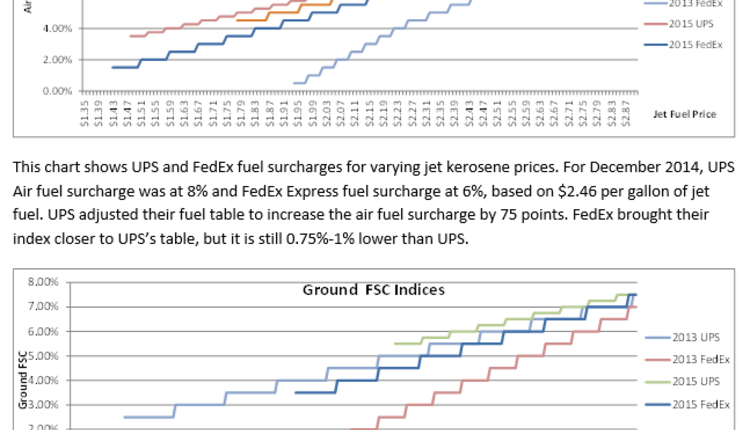As logistics professionals, we try to help shippers deliver their products in the least amount of time and at the lowest possible cost. However in today’s retail world, it is all about driving sales through value-add, while keeping an eye on the bottom line. Whether the product moves from a fulfillment center to the buyer in a corrugated box, or from a distribution center to a store shelf on a pallet, the goal is the same: reach the customer before some other retailer does, exceeding the customer’s expectation, at a profitable cost point. Efficient, effective logistics make this transaction possible. The past decade has been reshaping the nature of retail: exponentially growing ecommerce volumes, big retailers moving to omni-channel and transit times getting shorter. Amazon has grabbed a greater share of the retail market by reducing its prices and offering free two-day shipping (with Amazon Prime membership), even if it means razor thin margins. Being the titan that it is, whatever Amazon decides to do affects all retailers. As a result, two-day free shipping has become the norm of ecommerce, or put another way, it is the new minimally acceptable expectation. Big box retailers and smaller sized retailers alike have to change and adapt in order to compete with Amazon. Major retailers such as Borders and RadioShack have disappeared, mainly because they couldn’t keep up with the changing environment. The consumer of today has more knowledge, demands instant gratification, and uses digital merchandise whenever available. The consumer can go to a brick-and-mortar store, compare the merchandise on the shelf to the alternatives on a mobile phone, read product reviews, compare prices, and make purchasing decisions from an array of options.
Amazon has been offering same-day delivery in many major metropolitan areas for a couple of years, and started offering one-hour delivery in Manhattan in December, 2014. Google Express provides free same-day shipping from many retailers in select metro areas. The question is not whether same-day delivery will become the new normal; it is when and how. The answer to “when” is sooner than you think, as Amazon will keep expanding its reach, including groceries in its product mix. The harder question is “how.”
Today’s typical delivery systems cannot handle same-day delivery, so any retailer looking into same-day delivery has to find a solution that is outside the box. UPS and FedEx offer same-day delivery, however they are extremely expensive services aimed for critical applications, and are not viable options for retailers.
Same-day deliveries will only be viable in metro areas, at least in the near future. Without high population density and stores or DCs that are in 5-10 mile radius of the consumers, the economies will not allow same-day delivery. For same-day retail deliveries, the product has to be in close proximity to the consumer in the first place, which is one major advantage many brick and mortar stores have over Amazon. Stores will need to take over some of the volumes from fulfillment centers, as they will be closer to the end consumer. For same-day service, traditional parcel carriers will need to be substituted by decentralized or distributed delivery systems. Picking up from shippers, consolidating and sorting them in a central hub and then loading them to delivery trucks for delivery in the same day would require too many hubs, and too many hours. Instead the same courier has to pick up orders and deliver them in the same run using an optimized routing solution. There has to be a DOMS (Distributed Order Management System) that is capable of tracking inventory at each store and finding the optimum store for shipping the order. As in omni-channel, shipping from stores has its own complexities beyond just having the inventory. The store is designed for servicing physical shoppers, and repurposing the store associates as shipping associates and using back storage as a shipping station can be complicated. One other aspect of shipping from stores is that the SKUs that will be available for same day delivery will be limited by the capacity of the ship-from locations, so careful inventory demographic and velocity patterns are a critical part of the equation.
One advantage of skipping the parcel system is the possible elimination of cardboard boxes. Since the shipment will not have to endure the drops from chutes, transits in trucks, and miles of conveyor belts, the merchandise can be delivered in a sealed pouch, which reduces overhead in the store that would result from a full shipping station, as well as savings on corrugated.
While it’s a relatively new concept for many retailers, florists have been delivering flowers same-day for decades. Besides flowers, groceries, drugs, auto parts, shoes, office supplies, and gifts are ideal candidates for same-day delivery. Today, companies like Google Express and crowd sourced applications like Uber, Shutl, and Deliv.co allow retailers to deliver shipments in metro areas. With the exception of Google, none of these companies existed 10 years ago, yet they are playing a great role in providing same-day delivery services.
While we don’t have a crystal ball to predict the future of shipping trends, we know that customers are looking for faster delivery, and free shipping. For free shipping where transit time is not critical, USPS consolidated services such as SurePost and SmartPost are becoming the norm. For fast deliveries, consumers are expecting to pay a shipping charge, as long as it is not extreme. The retailers who want to remain competitive have to build a road map, identifying if same-day is going to drive more customers to their business, what carriers and systems they can utilize, which SKUs would be in the mix, and start testing. The best time to undertake this effort is yesterday. The second best time is now. The clock is ticking.
Baris Tasdelen is Sr. Analyst, Transportation Solutions Consulting at enVista.
Amazon has been offering same-day delivery in many major metropolitan areas for a couple of years, and started offering one-hour delivery in Manhattan in December, 2014. Google Express provides free same-day shipping from many retailers in select metro areas. The question is not whether same-day delivery will become the new normal; it is when and how. The answer to “when” is sooner than you think, as Amazon will keep expanding its reach, including groceries in its product mix. The harder question is “how.”
Today’s typical delivery systems cannot handle same-day delivery, so any retailer looking into same-day delivery has to find a solution that is outside the box. UPS and FedEx offer same-day delivery, however they are extremely expensive services aimed for critical applications, and are not viable options for retailers.
Same-day deliveries will only be viable in metro areas, at least in the near future. Without high population density and stores or DCs that are in 5-10 mile radius of the consumers, the economies will not allow same-day delivery. For same-day retail deliveries, the product has to be in close proximity to the consumer in the first place, which is one major advantage many brick and mortar stores have over Amazon. Stores will need to take over some of the volumes from fulfillment centers, as they will be closer to the end consumer. For same-day service, traditional parcel carriers will need to be substituted by decentralized or distributed delivery systems. Picking up from shippers, consolidating and sorting them in a central hub and then loading them to delivery trucks for delivery in the same day would require too many hubs, and too many hours. Instead the same courier has to pick up orders and deliver them in the same run using an optimized routing solution. There has to be a DOMS (Distributed Order Management System) that is capable of tracking inventory at each store and finding the optimum store for shipping the order. As in omni-channel, shipping from stores has its own complexities beyond just having the inventory. The store is designed for servicing physical shoppers, and repurposing the store associates as shipping associates and using back storage as a shipping station can be complicated. One other aspect of shipping from stores is that the SKUs that will be available for same day delivery will be limited by the capacity of the ship-from locations, so careful inventory demographic and velocity patterns are a critical part of the equation.
One advantage of skipping the parcel system is the possible elimination of cardboard boxes. Since the shipment will not have to endure the drops from chutes, transits in trucks, and miles of conveyor belts, the merchandise can be delivered in a sealed pouch, which reduces overhead in the store that would result from a full shipping station, as well as savings on corrugated.
While it’s a relatively new concept for many retailers, florists have been delivering flowers same-day for decades. Besides flowers, groceries, drugs, auto parts, shoes, office supplies, and gifts are ideal candidates for same-day delivery. Today, companies like Google Express and crowd sourced applications like Uber, Shutl, and Deliv.co allow retailers to deliver shipments in metro areas. With the exception of Google, none of these companies existed 10 years ago, yet they are playing a great role in providing same-day delivery services.
While we don’t have a crystal ball to predict the future of shipping trends, we know that customers are looking for faster delivery, and free shipping. For free shipping where transit time is not critical, USPS consolidated services such as SurePost and SmartPost are becoming the norm. For fast deliveries, consumers are expecting to pay a shipping charge, as long as it is not extreme. The retailers who want to remain competitive have to build a road map, identifying if same-day is going to drive more customers to their business, what carriers and systems they can utilize, which SKUs would be in the mix, and start testing. The best time to undertake this effort is yesterday. The second best time is now. The clock is ticking.
Baris Tasdelen is Sr. Analyst, Transportation Solutions Consulting at enVista.









